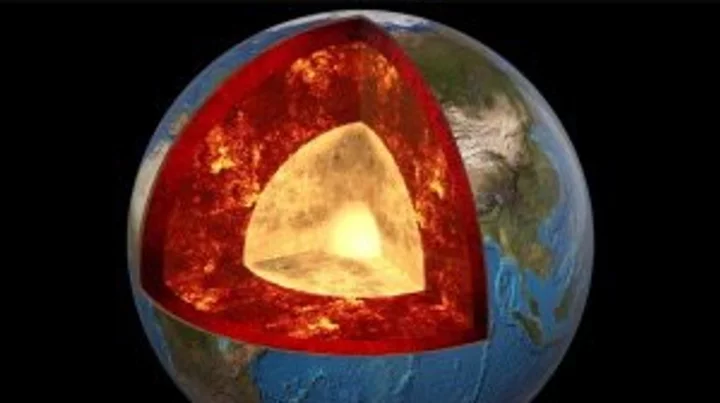
iPhone 12 is not emitting dangerous radiation, Apple says, amid fears of Europe ban
Apple has denied claims that its iPhone 12 emits illegal levels of radiation for users, amid fears that the phone could face a Europe-wide recall. France’s National Frequency Agency (ANFR) said on Tuesday that tests had revealed unusually high levels of electromagnetic radiation being emitted from the device. The smartphone, which was released in 2020, has a reported Specific Absorption Rate (SAR) that is 40 per cent above the legal limit, according to to agency. The ANFR therefore ordered Apple to halt sales of the device and warned that a recall would follow if Apple fails to fix the problem. A spokesperson for Apple told The Independent that it contests the results of the findings made by the AFNR and is engaging with the regulator in an effort to prove that its iPhone 12 is compliant. The US tech giant said it has provided the ANFR with independent third-party lab results proving the iPhone 12’s compliance, and has already been certified by multiple international bodies that it meets SAR regulations. The Independent has reached out to the AFNR for comment. Other regulators across Europe have warned that the French findings could have implications for the rest of the continent, with Belgium, Germany and the Netherlands all signalling that they might follow the sales ban. Dutch digital watchdog Rijksinspectie Digitale Infrastructuur (RDI) said on Wednesday that there did not appear to be an “acute safety risk” but that the Netherlands attached “as much importance as France to safe use of mobile phones”. On Tuesday, France’s junior minister for digital economy said that the ANFR’s findings would be shared with other EU member states, warning that it could have a “snowball effect” for the smartphone maker. Apple is set to discontinue sales of the iPhone 12 following the launch of the iPhone 15 earlier this week, however any potential recall could prove damaging. German regulators said on Thursday that the French procedure could have implications for the whole of Europe. Read More France’s iPhone 12 ban could spread across Europe, regulators say
2023-09-14 20:54

Arm Holdings is valued at $54.5 billion in biggest initial public offering since late 2021
U.K. chip designer Arm Holdings is scheduled to start trading on the Nasdaq Thursday, in what is the largest initial public offering of shares in nearly two years
2023-09-14 20:51

IEEE 2089™ Provides Foundation for European Reference Document for Children's Protection & Well-being Online
PISCATAWAY, N.J.--(BUSINESS WIRE)--Sep 14, 2023--
2023-09-14 20:50

Mobile Apps Become Increasingly Critical Battleground for Retirement Plan Providers, J.D. Power Finds
TROY, Mich.--(BUSINESS WIRE)--Sep 14, 2023--
2023-09-14 20:29

Featuring a Fresh Breed of Young Content Creators and Creative Storytellers, blinx Digital Media Hub Launches to Empower Middle Eastern Youth with Elevated Storytelling and News
DUBAI, United Arab Emirates--(BUSINESS WIRE)--Sep 14, 2023--
2023-09-14 20:28

Alicia Kao, Managing Director of KuCoin: Self-Regulation Will Bring Sustainable Development
VICTORIA, Seychelles--(BUSINESS WIRE)--Sep 14, 2023--
2023-09-14 20:24

NTT and NCNP to Develop Brain Bio-Digital Twin Technology
TOKYO--(BUSINESS WIRE)--Sep 14, 2023--
2023-09-14 20:20

The black bit at the end of a banana is not as gross as you might think
When you chow down on a banana, you might often see a black bit at the end and it looks a bit gross. But what is it? Some people think it is the seed, but these are found down the middle, if at all, as the Cavendish variety of bananas, which is commonly sold typically doesn’t produce any seeds. It is actually something completely different. Bananas are technically berries and the black bit is the nub of the flower from which the giant banana berry grew. Bananas grow on trees in bunches, and the end is actually the top of the fruit while the hard stalk is the bottom. But given most people eat bananas by snapping off the stalk first, the residual flower nub is left at the end. This black bit is entirely edible but people often throw it away because it has a tough texture and a bitter taste. So now you know, there is nothing stopping you from getting one of your five a day. Sign up to our free Indy100 weekly newsletter Have your say in our news democracy. Click the upvote icon at the top of the page to help raise this article through the indy100 rankings.
2023-09-14 20:17

Copy of Science news - live: 'Alien corpses' unveiled to Mexican Congress
It feels like this year, more than any other, we’re seeing a stream of science stories that continue to blow our minds. Every day is a school day online in 2023, and a host of studies, research papers and headline-making breakthroughs have completely changed our understanding of the world around us at every turn. There have been missions to the moon and findings about our planet which could turn everything we thought we knew on its head – not to mention baffling hearings on UFOs taking place in the US congress. These are the biggest science stories so far this year that have caught our attention in a big way. https://www.indy100.com/science-tech/ocean-beneath-earth-crust-ringwoodite-2665333030 Test Test Scientists discover continent that had been missing for 375 years Geoscientists discovered a continent that had been hiding in plain sight for almost 375 years. Historically, there's been speculation about whether a continent known as Zealandia or Te Riu-a-Māui in the Māori language exists. Read more here. 'Alien corpses' unveiled in Mexico divide conspiracy theorists Christmas has come early for UFO watchers, with the alleged corpses of real-life aliens displayed for the world to see. The startling revelation came during a congress hearing in Mexico City on Tuesday, titled the Public Assembly for the Regulation of Unidentified Anomalous Aerial Phenomena (UAP). During the session, which was streamed online, Mexican ufologist Jaime Maussan presented what he claimed were two perfectly preserved “non-human entities”. Read more here. Buy now , Massive ocean discovered beneath the Earth's crust containing more water than on the surface People are only just realising that there’s a massive ocean hidden under the Earth’s crust. It turns out there’s a huge supply of water 400 miles underground stored in rock known as 'ringwoodite'. Scientists previously discovered that water is stored inside mantle rock in a sponge-like state, which isn’t a liquid, solid or a gas, but instead a fourth state. Read more here. Buy now , Sign up for our free Indy100 weekly newsletter Have your say in our news democracy. Click the upvote icon at the top of the page to help raise this article through the indy100 rankings
2023-09-14 19:57

iQmetrix to Present on the Future of Telecom Retail at the 2023 Telecom Industry Address
VANCOUVER, British Columbia--(BUSINESS WIRE)--Sep 14, 2023--
2023-09-14 19:28

TransLogic™, a Swisslog Healthcare Company, to Showcase Technology Solutions at Healthcare Facilities Symposium and Expo
BROOMFIELD, Colo.--(BUSINESS WIRE)--Sep 14, 2023--
2023-09-14 19:28

Spectro Cloud’s New Palette EdgeAI™ Solution Helps Organizations Realize the Potential of AI Augmented Applications at the Edge
SAN JOSE, Calif.--(BUSINESS WIRE)--Sep 14, 2023--
2023-09-14 19:28
You Might Like...

Popular Reddit app Apollo shuts down as site’s users revolt against it

Altium Achieves SOC 2 Type 2, Reinforcing Commitment to Data Security and Compliance

Cooke Announces the New SP3 Full Frame Cine Lens Line; More Info at B&H Photo

Vision Pro: Apple starts letting developers make apps for its upcoming headset

Apple Watch update finally brings feature new buyers have been waiting for

VicOne Partners with Clientron to Offer IVI Solution with Integrated Cybersecurity for EV Buses

Google Maps and Waze temporarily disable live traffic data in Israel

A cannibal solar storm will allow people in the UK to see the Northern Lights
